Ironman Lubbock 70.3 – Race report
TLDR:I was looking forward to running my 1st 70.3 in Lubbock, TX, aka Hades annex – but a storm came through the night before and gave us more mild temperatures.
Of course, I had my race all planned out 📝. I knew that I could finish the swim in about 35min and be off to a great start. Then I attempted to execute and the universe laughed at me 😂. Immediately upon entering the water a progressive feeling of claustrophobia came over me. I began hyperventilating and was unable to calm down. 500 yds in I grabbed a safety boat to regroup. No relief, Nothing. I’m embarrassed to admit that in that moment I considered quitting. But as @coachtridot says, fight.man.fight! I decided today is not that day, I will exhaust all options. So, I opted to pull my wetsuit down and let it hang by my waist. Swimming with a water scoop is better than quitting👊🏾. Just make it out of the water and regroup.
Once on the bike, I was relieved. I didn’t feel mentally settled into the race for another 30 minutes, the swim really got in my head. The course was flat with some expected wind gusts. Overall, I felt amazingly powerful the entire 56 miles. I was back in the game 🤘🏽. I didn’t hit my time goal primarily because I had to stop and pee 7 times 🤪. With each stop, I was reminded that my body has recovered remarkably well, but the recovery from surgery is far from over. I smiled and felt fortunate to be as strong as I am pushing myself to do what I love.
I hit the run course with two objectives. Run the entire course (walk at aid stations only) and sustain a 10min/ mile pace. I almost did both but fell apart around mile 11 and ended up slowing down.
The race went exactly the way it was supposed to go. I adapted and kept fighting and smiling until the end.
We chose to drive the 9 hours to Lubbock and the trip from Houston didn’t begin as I thought it would. . After packing up the truck, I got in and my son asks if I need my bike. WTF? I said, yep, thanks, grabbed my tri-bike from the house, and mounted it on the back. Then, as I was getting back into the car Robin asked if I had my triathlon gear…. shit, shit shit! where is my head? I’m leaving for a race and forgot to bring my bike and race gear! Perhaps feeling under the weather for the last two weeks had impacted my desire (confidence) to run the race. Not training for over a week affected my feeling of being race-ready. Fortunately, the drive was uneventful and we arrived fairly early in the evening.
Pre-race necessities
All races require an athlete check-in. Usually, the day prior, but sometimes the morning of the race too. Ironman check-in is a production in and of itself. The process can be – no, is – stressful. I’ll write a separate post that details the process, but here are the major components:
- Read the 50-page Athlete guide
- Reserve times to pick up your race packet (timing chip, number, stickers, swim cap, transition bags)
- Reserve a time to leave your bike at transition 1
- Drop your run bag at transition 2 (different location from T1)
- Attend the athlete’s briefing (mandatory)
- Pack and organize race nutrition, and the necessary gear for each segment.
Once all of those things are done, it’s a matter of resting and getting some sleep so that I’m awake, fed and at the swim start by 5 am ready to begin the day.
Race day!
I set my alarm for 4:15 am so that I’d have time to eat my oatmeal, a banana, drink a cup of coffee, and some electrolytes before heading to the transition area at 5. However, I turned the volume down on my phone when I went to bed and didn’t hear the alarm. Fortunately, I didn’t sleep much or very heavily through the night and happened to wake up at 4:30 concerned that I’d oversleep and miss the start. Yet another warning that I still didn’t have my head in the “game”.
Once in Transition, I slowed down and made sure to think through what I was going to need before the swim, after getting out of the water and onto my bike. All the while, my stomach is churning and my brain is reminding me that I will have to use the bathroom and the lines for the Port-o-John’s are only getting longer. Pre-race GI distress is very common. Should I stop and get in line and feel rushed to get setup afterward or stay focused, get setup then hope the line is not too slow causing me to have an accident on myself?
The small stresses accumulate like a rolling snowball.
I chose to get in line first. I am still battling bladder and bowel insecurity, so relieving that source of stress was of primary importance to me.
While getting set up the announcer informed us that the water temperature was 76 so the swim was wetsuit legal. Ahhh, relief. I prefer to swim in my wetsuit, especially for longer distances. About 5:45 am they began calling those who planned to finish with relatively fast times to begin exiting the transition area and walk (~3/4 mile) to the swim start. Similar to a marathon, each group is lead by a person holding a sign in the air. My group was the 35-40 min finish time (1:40 min/ 100 yds). Having averaged about ~1:40 one month earlier at the CapTex Triathlon I was absolutely confident that I could do it again for this race. The swim distance for this race is a little longer, but I knew that moving at that pace is completely manageable without shooting my heart rate too high.
A violent thunderstorm overnight washed mounds of mud onto the road that we used to walk from transition to the swim start. Normally, I walk barefoot, but for this race, I bought some cheap flip-flops just in case. Boy, oh boy was I happy with that decision. The mud and the rocks were not fun to walk in with shoes, watching the barefoot athletes’ faces only reinforced that I hadn’t wasted $5 for a 3/4 mile walk.
Once at the swim start area, we just stood around and waited for the sun to rise and provide enough light so that we could swim safely. While waiting, I felt the anxiety building and my need to use the bathroom increasing – causing more anxiety in return. Wearing a full wetsuit and a triathlon suit make using the toilet a pain in the ass, so I decided to practice some breathing exercises to calm myself. Initially, I did box breathing to no avail. I then tried a different pattern that has benefitted me in the past, 4-7-8 breathing, and had some reduction in my anxiety. Then, suddenly, I thought, should I be calming myself right before I race? Or, do I want the heightened sense of tension? I didn’t know which state would be most beneficial, so I stopped my breathwork and simply stood in line and waited. While waiting, I spotted a few people that I knew and said hello to them. Actually, now that I’ve done a few races, train with a consistent group of athletes, and am active on social media, I’m both recognizing and being recognized by more and more people at the events. Fortunately, the feeling of community has genuinely translated into real life.
I was in line with another Houston Racing Triathlon Club member (HRTC) with a similar finish time goal, so we entered the water together. Almost immediately upon entering the water, I began to develop a slow progressive sense of claustrophobia. With a full wetsuit on the feeling is not unusual at the start of a swim so I didn’t pay it much mind. I just focused on my pace and form. Surprisingly, the feeling didn’t dissipate, it intensified and I found myself beginning to hyperventilate. A mental meltdown was underway and I was not able to regain control. I stopped swimming and let some cool water into my suit which should have helped me feel less constrained and hot. No impact. Next, I flipped on my back and floated while focusing on slowing my breathing and calming myself. Still nothing, I felt as if I couldn’t get enough air and my heart rate was going through the roof. I tried swimming again thinking that if I could just get into a rhythm things would settle down. Nope! 450 yds into a 2100 yd race and I was losing my wits. The next thought was I’ll never get through this, I should throw in the towel and quit.I felt awful. My mind was screaming “make it stop, make it stop now”! My heart and spirit wanted to ignore the voices, but how???
💡… grab a buoy or the safety boat!
I swam to the nearest buoy but it was not easy to hold, so I swam over to a nearby safety boat. They asked if I needed help, I said, I just need to hold on for a minute and calm down (which is allowed). After what felt like a few minutes, but was probably only 20 seconds, I was not getting calmer, my breathing was still excessively fast and it was hard to even talk to the guys on the boat. Not willing to quit, I decided to pull my wetsuit off. Then, I thought if I remove it will they take it? Will I ever get it back? Can I even get it off my feet without exhausting myself in the process? Ultimately I chose to take the top part off and let it hang at my waist. The compression and insulation were most likely the primary culprits causing me to feel so out of control.
With the wetsuit hanging at my waist, I let go of the boat and set off to finish the swim. I knew that having all that neoprene hanging off my body would be like pulling a sail underwater. Letting go of any time goals was necessary, finishing the swim was what I needed to think about. That’s the only thing I focused on doing. My heart rate went down, my breathing got easier and I was able to get into a steady rhythm. Under normal circumstances, I would have been moving at a 1:40-1:45 / 100 yds pace. Instead, I was pulling an open wetsuit and my pace was more along the lines of 2:30/ 100 yds . I was moving slow enough to watch the slower starting racers pass me as if I was treading water. Anger filled me, being overtaken like that was not acceptable – even under the current circumstances. After that emotion passed, I settled back into a good rhythm and headed towards the finish line. The back half of the lake was very shallow and full of floating debris. Tree branches, dirt, and grass were hitting me in the face and going into my mouth – yuck. Fifty minutes later I reach the swim exit!
Swimming is typically the most relaxing part of a triathlon. Today it was the most mentally difficult. I don’t remember ever being so relieved to get out of the water. Fortunately, I wasn’t exhausted, just relieved.
While running from the water’s edge into transition to switch over to my bike, I took deep breaths and paused to make sure I was calm and ready to focus on the next event. The swim was over, it needed to be left in the past, not relived while on the bike.
Overall, I consider the swim to be a win and full of important lessons.
- I need a mantra and routine to focus my mind before and during my event.
- Small stressors are cumulative. Not paying attention to them can result in mental overloading and a subsequent breakdown. Having techniques to reset & refocus my mind are essential.
- Allow thoughts and emotions to pass, don’t hang on to them. I wanted to quit at one point. I’m very happy that I didn’t respond to that impulse. Instead, I recognized the emotion and stayed the course while looking for ways to relieve the stresses that lead to the emotion.
- Always race my race. Responding to the feelings of anger when being passed by swimmers that were slower than I was could have made my swim experience even worse than it was. The goal was not to beat them. It was to complete the swim as quickly as possible. Then it became the need to finish the swim.
- I don’t like talking or interacting before I begin my race. I prefer to visualize what I am going to do in detail.
- Although my mind said “quit, you’ll never make it”, my spirit was unrelenting and wanted no parts of that sentiment. Because of the misalignment, I knew my mind was not presenting the best choice. I am overjoyed and grateful that I didn’t listen.
- Accepting “what is” at the moment allowed me to shift my priorities and continue racing with a positive mindset.


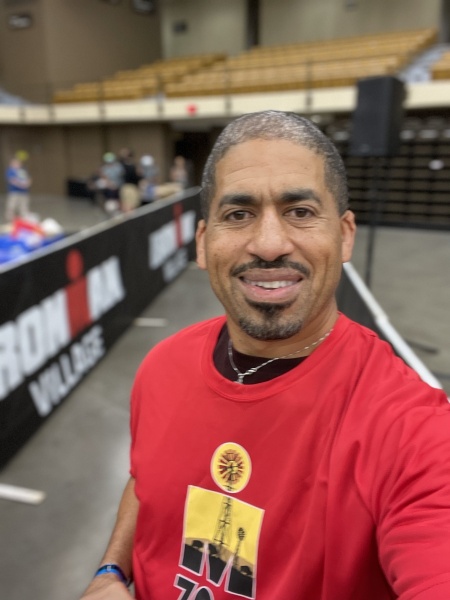
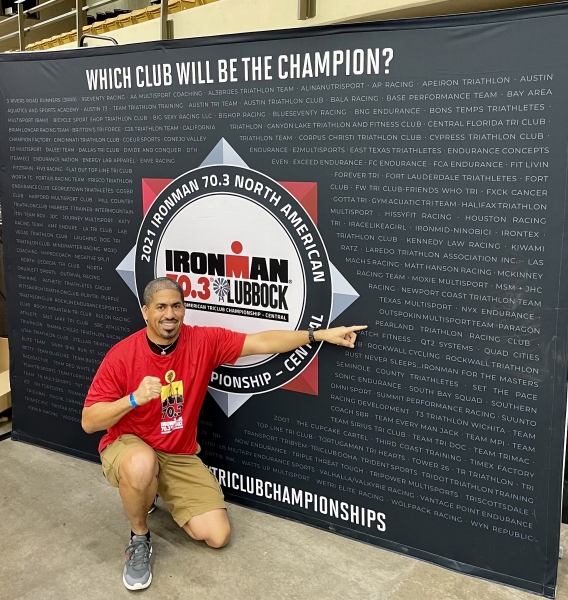
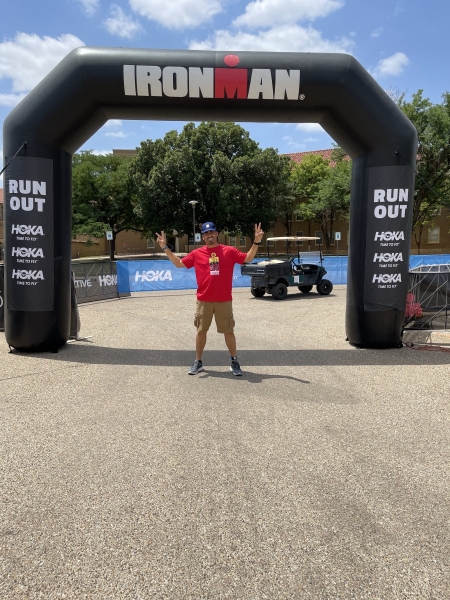
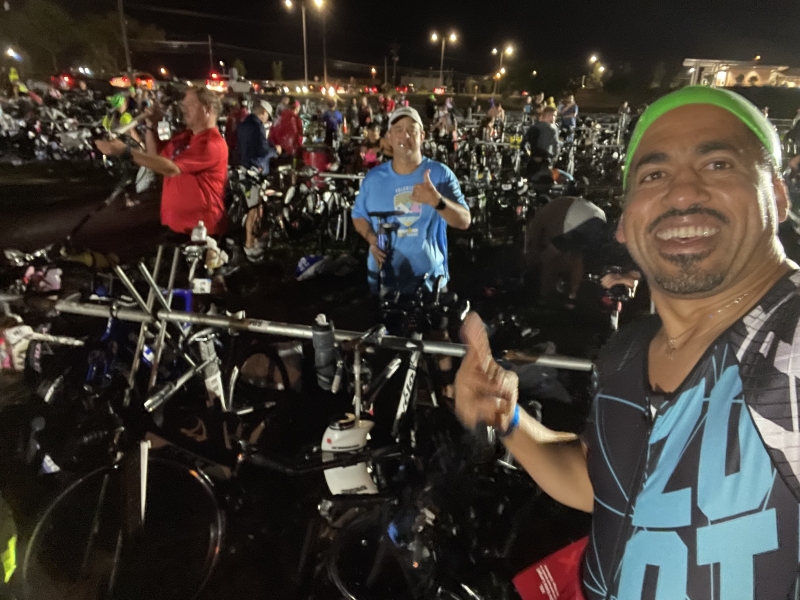

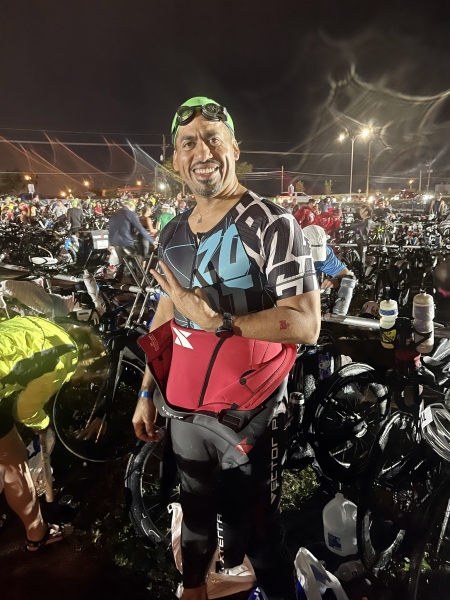
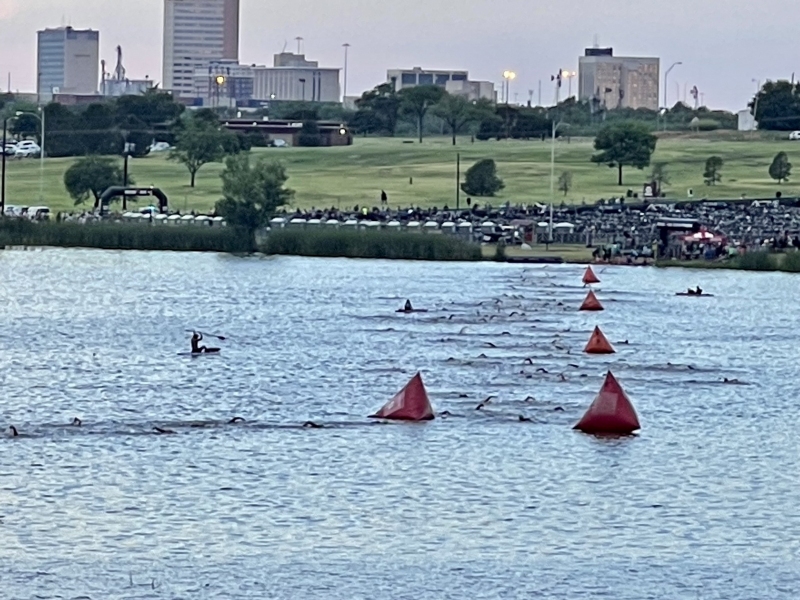






Trackbacks/Pingbacks